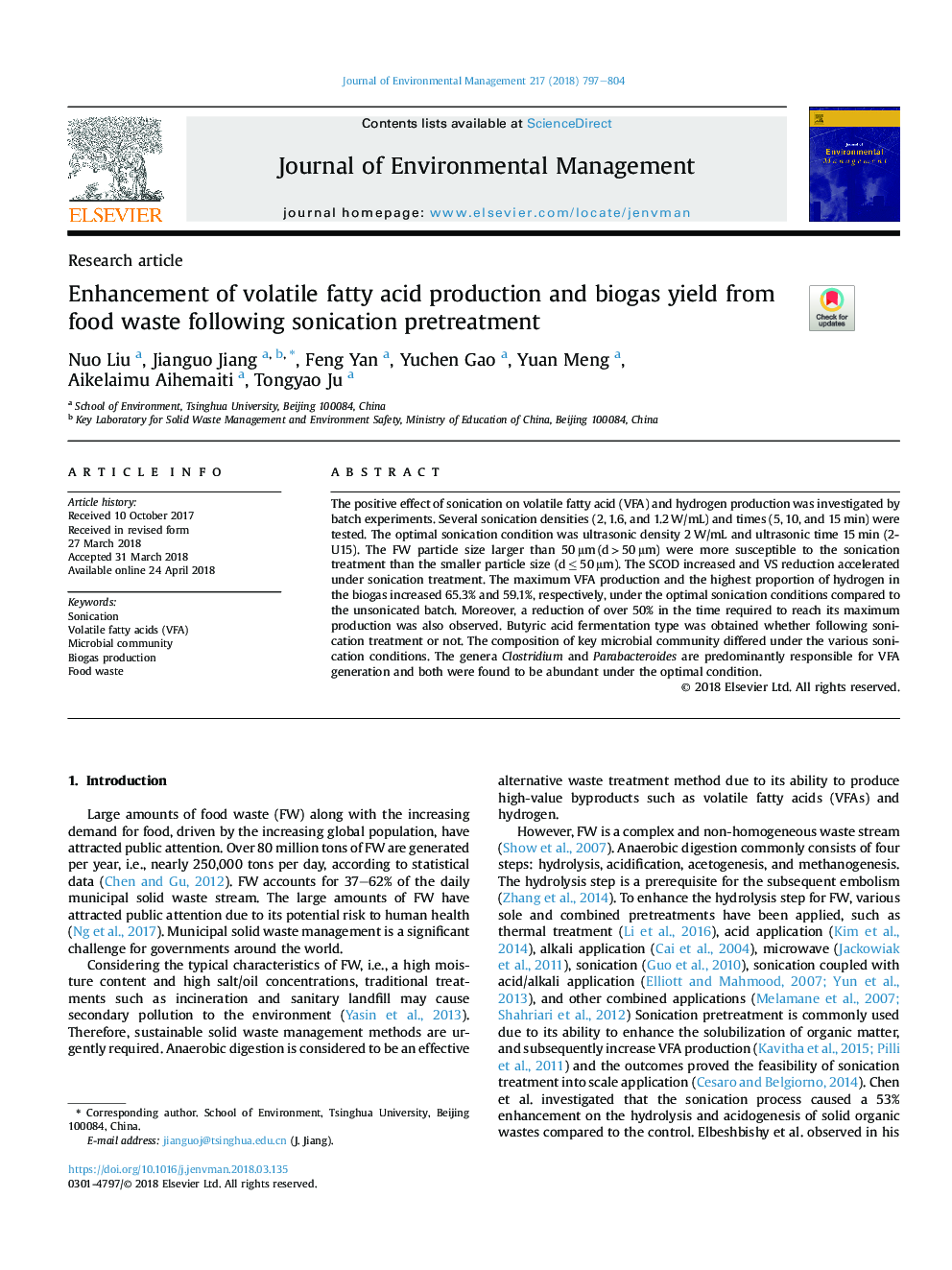| Article ID | Journal | Published Year | Pages | File Type |
|---|---|---|---|---|
| 7477826 | Journal of Environmental Management | 2018 | 8 Pages |
Abstract
The positive effect of sonication on volatile fatty acid (VFA) and hydrogen production was investigated by batch experiments. Several sonication densities (2, 1.6, and 1.2â¯W/mL) and times (5, 10, and 15â¯min) were tested. The optimal sonication condition was ultrasonic density 2â¯W/mL and ultrasonic time 15â¯min (2-U15). The FW particle size larger than 50â¯Î¼mâ¯(dâ¯>â¯50â¯Î¼m) were more susceptible to the sonication treatment than the smaller particle size (dâ¯â¤â¯50â¯Î¼m). The SCOD increased and VS reduction accelerated under sonication treatment. The maximum VFA production and the highest proportion of hydrogen in the biogas increased 65.3% and 59.1%, respectively, under the optimal sonication conditions compared to the unsonicated batch. Moreover, a reduction of over 50% in the time required to reach its maximum production was also observed. Butyric acid fermentation type was obtained whether following sonication treatment or not. The composition of key microbial community differed under the various sonication conditions. The genera Clostridium and Parabacteroides are predominantly responsible for VFA generation and both were found to be abundant under the optimal condition.
Related Topics
Physical Sciences and Engineering
Energy
Renewable Energy, Sustainability and the Environment
Authors
Nuo Liu, Jianguo Jiang, Feng Yan, Yuchen Gao, Yuan Meng, Aikelaimu Aihemaiti, Tongyao Ju,
